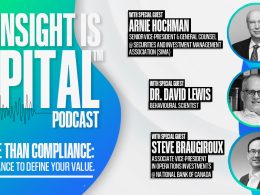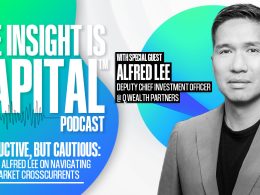Which Regulatory Affiliation Model Is Best for Your Business?
by Commonwealth Financial Network
 Consider all the changes that have taken place in the financial services industry over the last decade: the proliferation of increasingly complex products, relentless regulatory scrutiny, and changing client attitudes. The overall result? Fundamental changes in your core product—the delivery of financial guidance to retail investors.
Consider all the changes that have taken place in the financial services industry over the last decade: the proliferation of increasingly complex products, relentless regulatory scrutiny, and changing client attitudes. The overall result? Fundamental changes in your core product—the delivery of financial guidance to retail investors.
This evolution was one of the catalysts for Commonwealth to expand our affiliation model choices. Our advisors were looking for potential partnership options beyond the broker/dealer (B/D) affiliation. Much like them, you may be trying to determine which regulatory affiliation model is best for your business. A clear understanding of how these models are defined is a great place to start.
Most advisors are clear on what it means to be a registered representative, but industry terms like dual registration and hybrid can be somewhat nebulous depending on their context. Here’s what they mean within Commonwealth’s affiliation model structure:
- Traditional Registered Representative (RR): The advisor does exclusively commission-based brokerage business through Commonwealth’s B/D. This is why we all suffered through the Series 7 exam, and for a long time, it was the model through which the vast majority of retail clients obtained financial services.
- Dual Registration: The advisor functions as an RR for commission-based business through Commonwealth’s B/D and as an investment adviser representative (IAR) for fee-based business through Commonwealth’s registered investment adviser (RIA). This is the industry standard for independent B/Ds today, and it’s the model that has afforded Commonwealth advisors the ability to migrate their business to fees using our asset management platform (Preferred Portfolio Services® [PPS]).
- Hybrid: The advisor operates as an RR for commission-based business through Commonwealth’s B/D and maintains an independent RIA entity for fee-based business. This model is often touted as the best of both worlds. The reality is that the advantages here are balanced by a higher compliance burden at the advisor level.
- IAR-Only (Corporate RIA): The advisor conducts an exclusively fee-based business as an IAR of a large established RIA—in this case, Commonwealth. This model is seldom discussed in the broader industry. But it can be the ideal way to create scale expeditiously for advisors who want to assume a fiduciary role while outsourcing technology, compliance, and other administrative functions.
- RIA-Only: The advisor conducts an exclusively fee-based business through his or her own RIA entity. This model completely absolves an advisor of FINRA-related oversight and brings him or her under the regulatory umbrella of either the state or the SEC.
But given all these factors, how do you know which affiliation option is best, and should you consider a change?
Many advisors have the perception that the decision to change affiliation models should be based solely on revenue mix. That is, once the percentage of advisory revenue reaches a critical mass of, say, 80 percent, transitioning to an advisory-only model is inevitable. Although revenue mix is absolutely a consideration, it shouldn’t be the only driver. Even advisors approaching 100-percent advisory revenue sometimes like being able to use certain products that are primarily offered in a commission structure (e.g., real estate investment trusts or variable annuities with living benefits).
Recognizing that every practice is unique, here are some other considerations that could drive a change in affiliation.
1) Client and prospect positioning. Commonwealth advisors have been functioning as fiduciaries in our PPS program since its inception. Regulatory minutiae aside, it’s hard to believe that an advisor would consciously shift gears into a nonfiduciary mode when suggesting commissionable products. But if you want to remove all doubt about in what capacity you are acting, going 100-percent advisory will do it.
2) Merger/acquisition advantages. For firms looking to grow through merger or acquisition, the hybrid model may make sense from a positioning perspective. Many potential acquisition targets will be most interested in selling or merging with a firm similar to their own to ensure that their clients remain with a fully independent advisor.
3) Increased flexibility. There are certain activities that are specifically prohibited when operating under the FINRA umbrella. Rendering opinions to clients on unapproved investment vehicles (i.e., private securities transactions), using outside money managers, and creating performance advertising materials are a few areas where advisors often feel FINRA may be holding them back.
It's important to note that although the regulatory construct under the SEC may afford advisory-only firms some degree of additional flexibility, it doesn’t eliminate requirements in these areas. A change in affiliation model would not mitigate the risks associated with these activities, and advisors who move to an RIA model are solely responsible for navigating a potentially more esoteric compliance landscape.
4) FINRA fatigue. Some advisors want out from under the FINRA supervisory umbrella and believe it will be better in the verdant pastures of advisory-only business. Notwithstanding the money saved in FINRA licensing fees, this is probably not the best reason to make a move. Yes, an advisory-only model will free you from FINRA Firm Element requirements. But don’t forget that RIAs are beholden to either the SEC or their state administrators. It’s not coincidental that many affiliation model changes in recent years have been advisors moving from their own RIA to an IAR affiliation shortly after being treated to their first on-site audit.
Of course, we can’t discuss regulatory affiliation models without talking about the DOL fiduciary rule. Not getting into the particulars of how this rule will change the way advisors do business, it seems safe to say that it could potentially accelerate the migration to advisory accounts for retirement investors (including IRA holders). Consequently, as advisors weigh the impact to their business, some may decide to pursue a fee-only affiliation model, believing they can thus escape the dictates of the DOL.
This notion highlights a popular misconception that the DOL fiduciary rule applies only to commission business. This is not true: It fundamentally addresses any type of advice. Fee structures, conflicts of interest, and compliant 401(k) rollover strategies are just a few of the considerations that fee-only advisors will have to address along with their B/D-affiliated brethren. We believe that going it alone in this new environment will not be the first choice for most advisors.
The genesis of Commonwealth’s expanded affiliation models three years ago was a desire to offer additional flexibility to our existing advisors as their businesses grew and evolved. Likewise, we believed it would provide an opportunity to potentially enlarge the universe of prospective advisors looking for a business partner that could continually adapt to an ever-changing marketplace.
We want to be your last stop—regardless of regulatory affiliation. Our culture, community, technology, practice management, financial planning, research, and compliance expertise coalesce to create what we hope will be an indispensable partner to your firm.
Have you recently considered changing affiliation models? Has the DOL rule affected this decision? Please share your thoughts with us below.
Commonwealth Financial Network is the nation’s largest privately held independent broker/dealer-RIA. This post originally appeared on Commonwealth Independent Advisor, the firm’s corporate blog.
Copyright © Commonwealth Financial Network

















